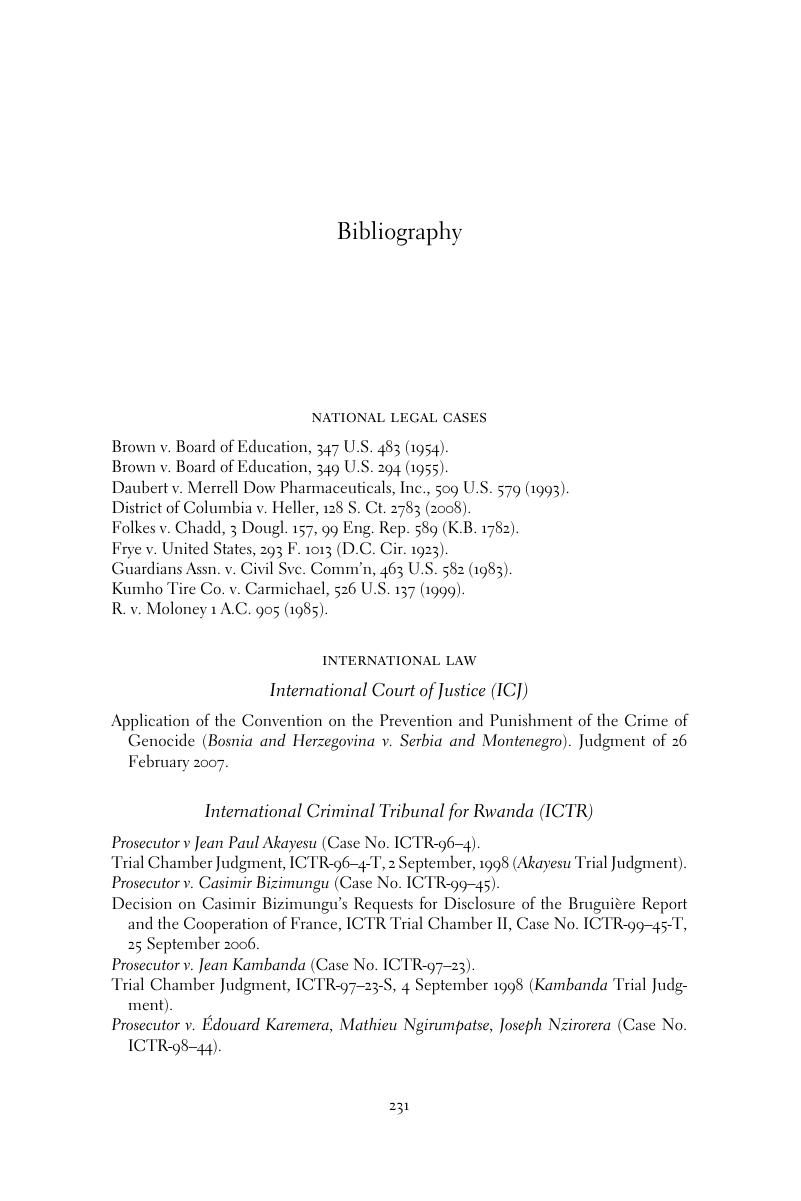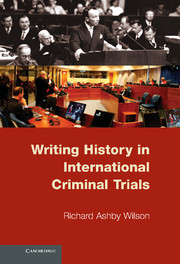Book contents
- Frontmatter
- Contents
- Epigraph
- Preface and Acknowledgments
- Figures and Tables
- Glossary
- 1 Assessing Court Histories of Mass Crimes
- 2 What Does International Actually Mean for International Criminal Trials?
- 3 Contrasting Evidence: International and Common Law Approaches to Expert Testimony
- 4 Does History Have Any Legal Relevance in International Criminal Trials?
- 5 From Monumental History to Microhistories
- 6 Exoneration and Mitigation in Defense Histories
- 7 Misjudging Rwandan Society and History at the International Criminal Tribunal for Rwanda
- 8 Permanent Justice: The International Criminal Court
- 9 Conclusion: New Directions in International Criminal Trials
- Appendix: Methodology and the Survey Instrument
- Bibliography
- Index
- References
Bibliography
Published online by Cambridge University Press: 05 June 2012
- Frontmatter
- Contents
- Epigraph
- Preface and Acknowledgments
- Figures and Tables
- Glossary
- 1 Assessing Court Histories of Mass Crimes
- 2 What Does International Actually Mean for International Criminal Trials?
- 3 Contrasting Evidence: International and Common Law Approaches to Expert Testimony
- 4 Does History Have Any Legal Relevance in International Criminal Trials?
- 5 From Monumental History to Microhistories
- 6 Exoneration and Mitigation in Defense Histories
- 7 Misjudging Rwandan Society and History at the International Criminal Tribunal for Rwanda
- 8 Permanent Justice: The International Criminal Court
- 9 Conclusion: New Directions in International Criminal Trials
- Appendix: Methodology and the Survey Instrument
- Bibliography
- Index
- References
Summary

- Type
- Chapter
- Information
- Writing History in International Criminal Trials , pp. 231 - 244Publisher: Cambridge University PressPrint publication year: 2011



